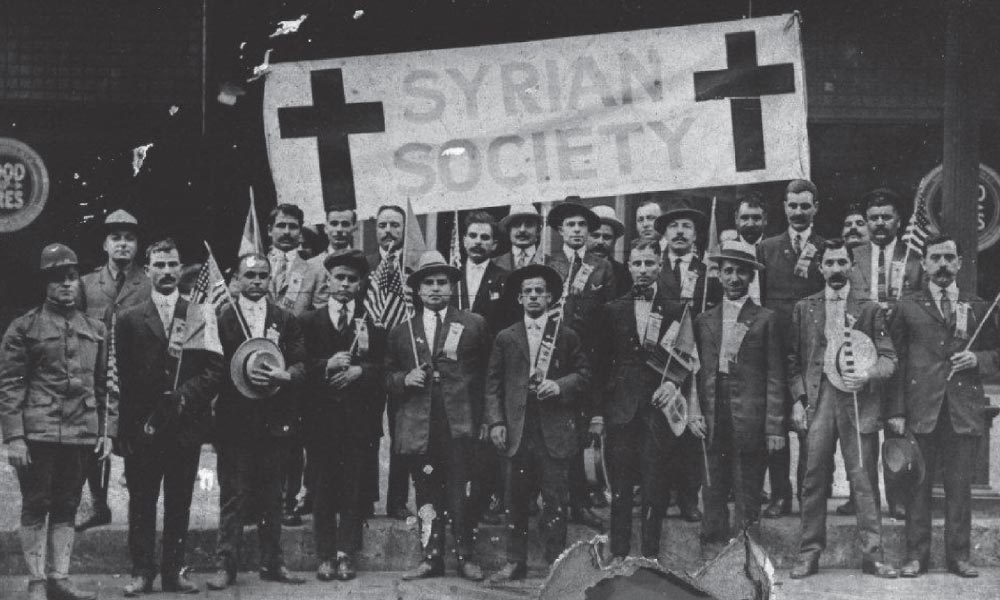The Origins of the Cedar Club of Atlanta
The History of the Cedar Club of Atlanta is the story of its members. It is the story of a group of men and women who loved the land of their birth but wanted more for their children and their children’s children. Our people did not come from the cities; they came from the villages and the mountains. They came with few possessions but came with faith, determination and hope.
Most of the immigrants who came to Georgia and the rest of the South did not arrive through Ellis Island but came in through Savannah and other Southern ports.
These were not the successful businessmen, women and community leaders that we remember and admired. Our forefathers, who gave us the opportunity in this great land, were poor immigrants barely out of their teens when they arrived. Some came with small children or bearing children. I’m sure they were afraid but still they came. Some made several trips back, as they could afford it, to bring another child or relative that was left behind.
They came for the freedom to live, work, and raise their families in a place where millions had tasted that freedom before them. They came to worship in the way that their fathers had worshiped.
When we scan the ships registries we often find they did not come from Syria or Lebanon. They came from Beirut, Zahle, Aleppo or Damascus -- Turkey. Yes, the land of our forefathers was part of the Ottoman Empire. Freedom to live and worship was a dangerous voyage and half a world away.
The stories of living and working in Atlanta and the surrounding area are the stories of fond memories; close knit families, Sunday dinners after Church, and living within a few blocks of each other. Our people lived mostly on the South side of Atlanta; on Hill Street, Memorial Drive and other streets around Grant Park in southeast Atlanta. Some lived in surrounding cities: LaGrange, Newnan, Jackson, McCaysville, Barnesville and Copperhill. But because there was only one Maronite and one Orthodox Church in the area, many came to Atlanta every Sunday and spent the day with relatives. The Azars, who lived on Memorial Drive had three seatings every Sunday at a table that held at least twelve people. The relatives or visitors would arrive with arms loaded with food from their kitchen or garden.

Our forebears came to the U.S. for freedom and they obtained the freedom to live, work and worship as they chose but ironically, before the turn of the last century, when they chose to become American citizens they were denied. But the kind of people that will pack up their wives, children and belongings and travel half way around the world in the bowels of ships are not the kind of people you can easily refuse.
One of the founding fathers of the Club that would become the Cedar Club of Atlanta, Costa G. Najour, challenged the denial ruling and won a landmark decision. Beginning in December of 1909 people of Syrian ancestry throughout the United States had the right to become American citizens. His story from the 1969 Convention
Although our forefathers and mothers now had the right to become citizens and the freedom to live and worship, they still were the victims from time to time of racial prejudice. Nineteen of them saw fit to form an association or an alliance for the benefit and protection of all. These were the grandfathers and great-grandfathers of many of our current members.
They were Ellis Koury Nour, Charles George (Azar), Ellis Mansour, Costa G. Najour, T.L. Saliba, S. Maloof, Jacob Ackel, Mike George (Azar), G.N. Saliba, D. Andrews, John Mansour, Aseff George (Azar), M.J. Coury, Tom Najjar, Soloman Jabaley, Deep Duraney, Eassy Ellis, Kalil Dahar, and George Zachem.
In 1910, the year after they won the right to become citizens, they formed the Syrian Association of Atlanta. There is not much written about the early history of this Association. We do know that they assisted in the war effort of the first World War and several of the charter members were instrumental in the organization and formation of our Arabic speaking Churches, St. Joseph Maronite and St. Elias Orthodox.

In 1917 about fifty soldiers of Syrian ancestry were brought to Atlanta from nearby Camp Gordon for a “Turkey Feast” at the “Syrian Church” at 4 Butler Street. About 100 local Syrians were in attendance. Our Charter members who chaired the event were Mike George (Azar), C.S. Maloof, Costa Najour and Tom Najjar. There were speeches made by the visiting soldiers and from our local members. Most of the speeches were in the “Syrian Tongue”. One of the speeches in English was made by a visiting soldier, Louis George. He thanked God for the republic in which they lived. He was thankful for the opportunity that this “most glorious and democratic of all republics” extends to us, “descendents of the ancient Phoenicians, to repay the debt we owe to this wonderful land of refuge.”
A few years later members of the Association again came together to request a charter to build an Orthodox Church. It was on the corner of East Hunter and King Street. At the time there were about thirty families who wanted to worship in their native tongue. Again the names Najour, Daher, Nour, and Azar, all Charter members, were at the forefront.
When the Maronites, who were referred to as Assyrian Catholics, wanted a Church of their own, Charter member Tom Najjar spear headed the drive. Its first location was also on East Hunter Street.
Money was often raised to aid the less fortunate overseas and our founding members performed many other acts of charity and community service.

